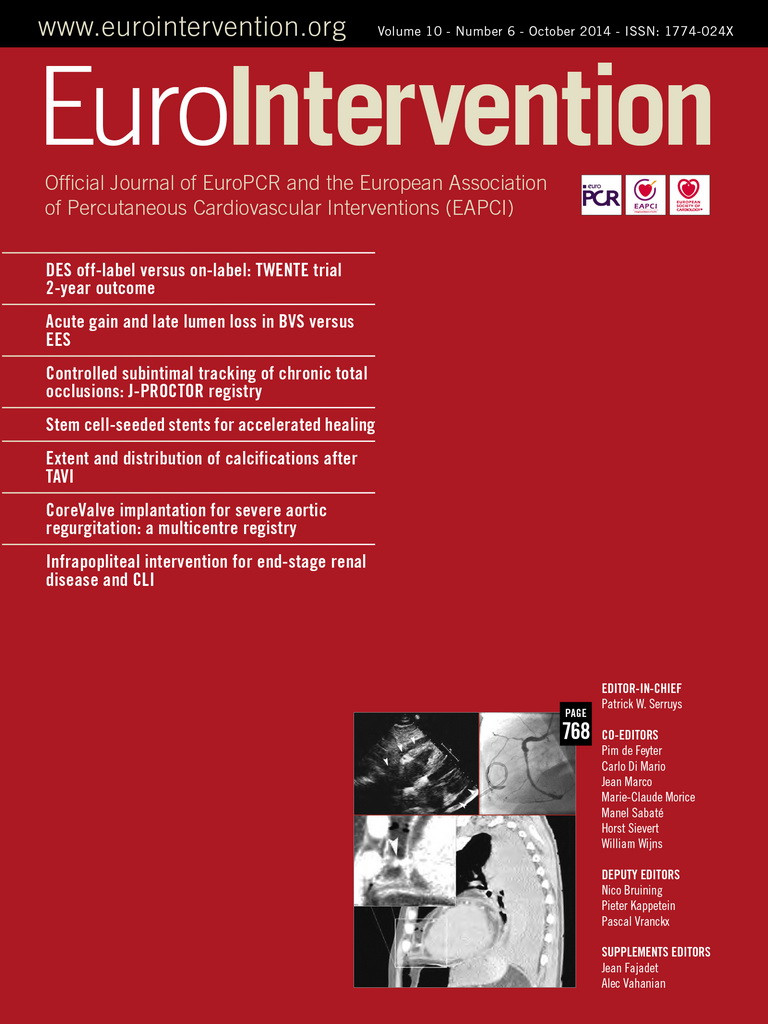With over 30,300 attendees, this year’s European Society of Cardiology (ESC) meeting, held in Barcelona, will be remembered as a great success. Panos Vardas and Keith Fox rose together to the challenge of managing and organising over 27 clinical hotline presentations, 15 clinical trial updates, 19 registry studies, four new guidelines and over 4,500 abstracts presented. I would also like to congratulate Panos on his impressive presidency of the ESC, meeting the challenges head-on and overcoming many obstacles with grace and dignity. We look forward to Fausto Pinto’s presidency carrying on in the same vein.
Personally, the highlight of this year’s ESC were the presentations and results of major studies. By coincidence or by design, a significant number of these studies emanated from within the STEMI field. I was particularly intrigued with the ATLANTIC study results presented by Gilles Montalescot. This study was a randomised trial examining the use of ticagrelor (in-ambulance vs. in-hospital administration). Pre-hospital administration was proven to be safe; however, no improvement in outcomes were seen. Despite the neutral study results, there is one very interesting element in this study, namely the fact that definite stent thrombosis was lower in the in-ambulance group at 24 hours (p=0.008) and at 30 days (p=0.02) after receiving ticagrelor 31 minutes earlier than the in-hospital group.
The one-year results of TASTE (randomised comparison between PCI plus thrombus aspiration vs. PCI alone for STEMI) were eagerly awaited. The results showed similar outcomes in both groups, maintaining an inherent no benefit for aspiration shown earlier at 30 days. This underlines the increasing importance of the ongoing TOTAL study results which may prove to have the final say on thrombus aspiration.
Tony Gershlick presented the CvLPRIT results in Barcelona (randomised comparison between complete vs. infarct artery only PCI). The results, complete revascularisation having a better outcome than infarct artery only PCI –consistent with the PRAMI results, are a major step forward in our understanding of the importance and relevance of additional treatment at the time of the STEMI.
Further, within the STEMI field, the Bern group presented interesting data on the effect of high-dose rosuvastatin on atherosclerosis (IBIS-4). Unsurprisingly, they found that rosuvastatin reduces plaque burden, but with the novelty that this is the first time it has been studied in STEMI patients.
Another highlight, and probably the most important finding of the congress this year, was the results of the PARADIGM-HF trial (Prospective comparison of ARNI with ACEI to Determine Impact on Global Mortality and morbidity in Heart Failure). The superiority of ARNI over enalapril on cardiovascular mortality did not surprise us at all, since, in fact, the study was stopped early at the beginning of the year, happily due to the “overwhelming benefit” of ARNI. These new findings could herald the end of ACE inhibitors or angiotensin receptor blockers.
Next year the ESC congress moves to London, the largest city within the EU with a metropolitan population of over 13 million inhabitants and also the city containing the oldest hospital –St Bartholomew’s Hospital– which was founded in 1123. Barts’ most famous “alumnus” is of course Dr John Watson, from Arthur Conan Doyle’s Sherlock Holmes. Holmes once remarked: “Good old Watson! You are the one fixed point in a changing age…” and I cannot think of a more appropriate analogy for the ESC.

